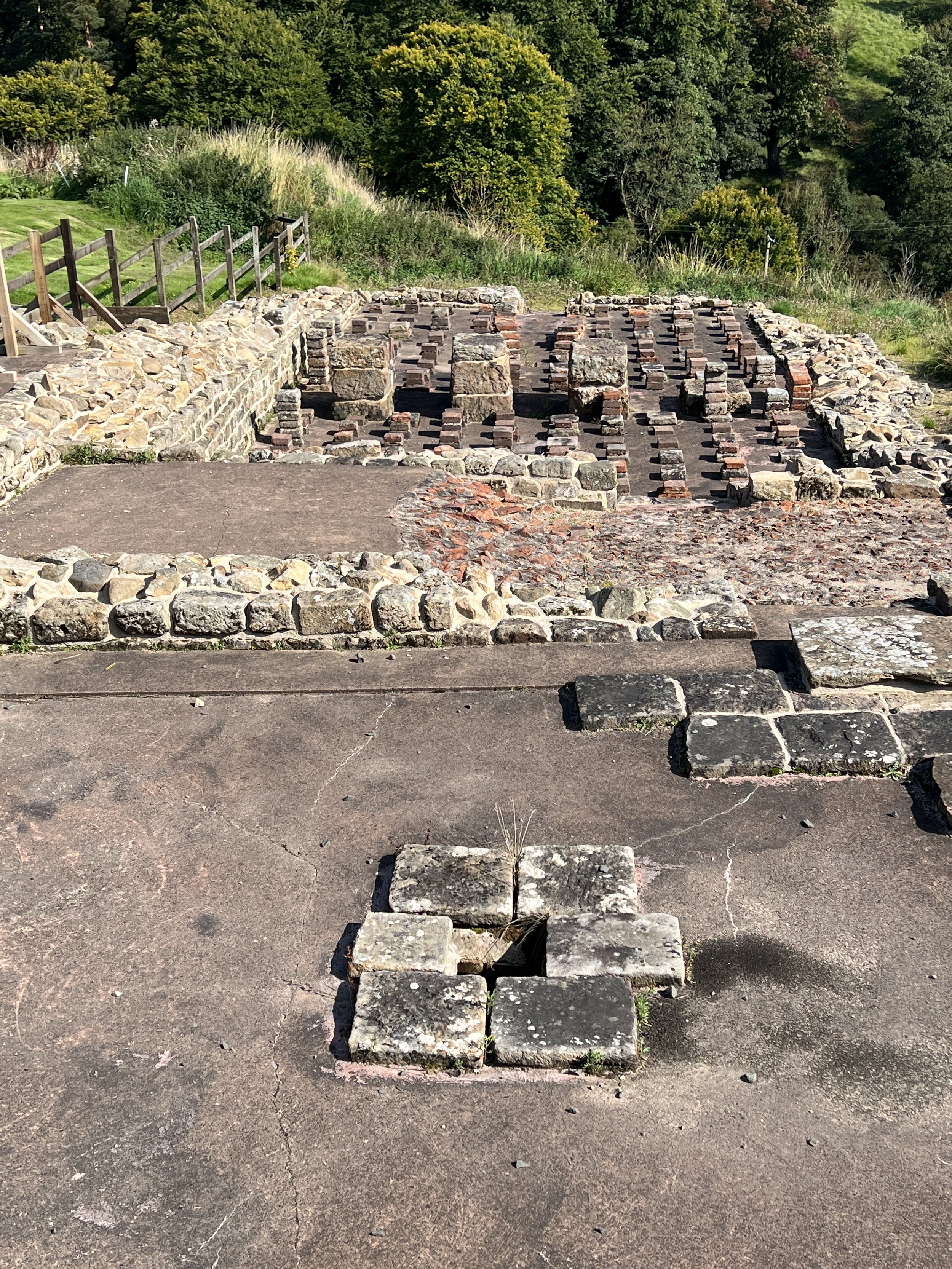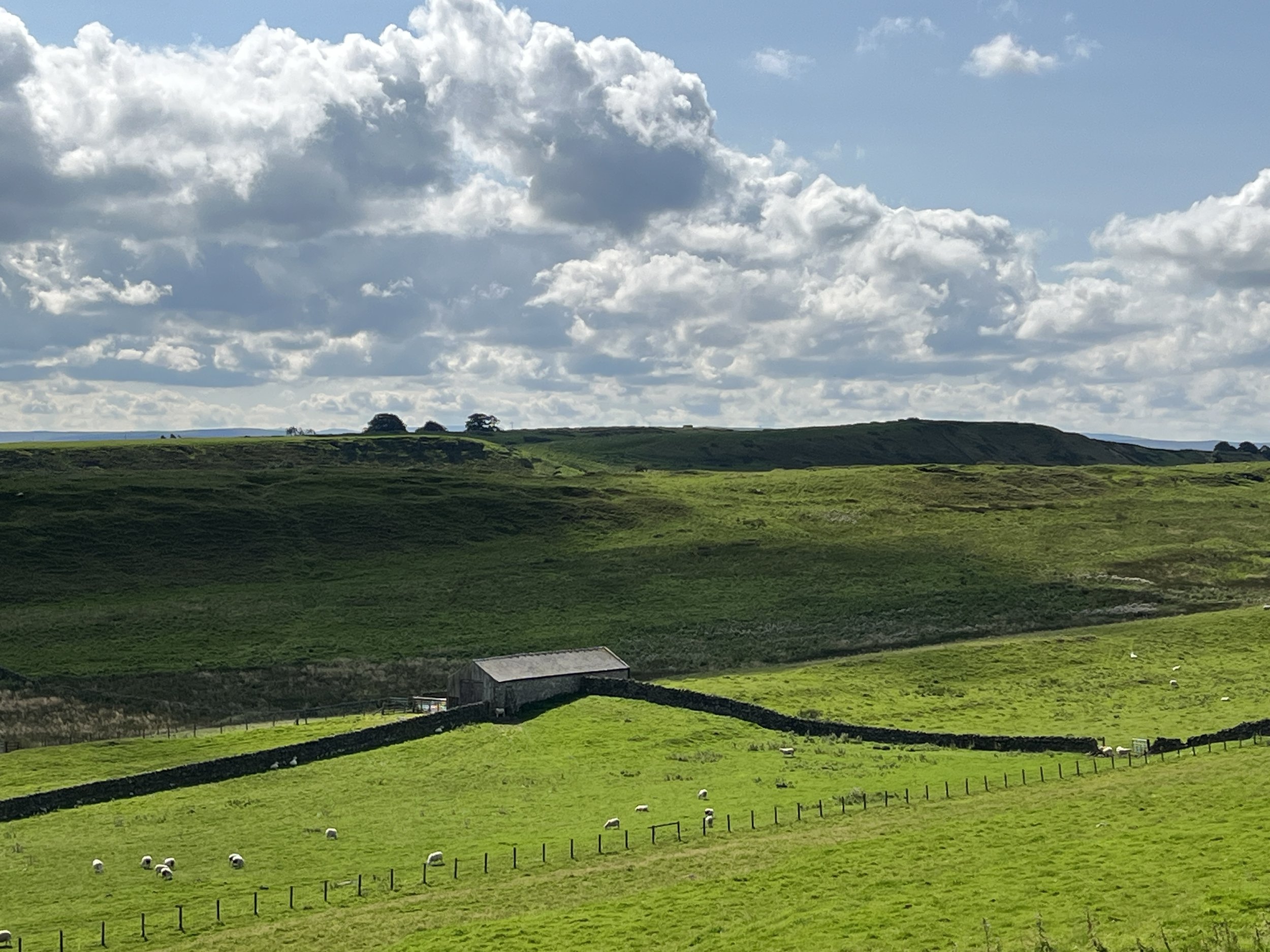POST PANDEMIC DIARY
From England To Scotland
September 2, 2023
It is five o’clock in Hexham, England. We are at The Beaumont Hotel in the center of town. A small reception area is in front as you walk in. A small dark wood bar to the right. Casual seating to the left. The front is expansive, windows floor to ceiling looking out on the street where “two-top” tables, occupied by townspeople and visitors alike, line the street-side. Yesterday afternoon and well into the evening The Beaumont was reveling. A group of ten were drinking Champagne in celebration of a wedding to take place the next day. Other couples, deep in conversation, exchanged memories, hopes and laughter. The couples outside were people-watching, as Adele and I are often wont to do, a wordless exchange of quiet meanderings and sometimes fierce and unfair opinions of the passers-by - “He could use to lose a few pounds”; “The designer of the bare mid-riff should be strangled with his own excess cloth”.
A small fraction of Hadrian's Wall
Upstairs, on the first level, there is another wedding party taking place. I pressed the elevator for “1” on my way down, forgetting that Europeans have a “Ground” floor. The elevator opened upon the aforementioned party just as the bride and groom were passing by. I commented on their sartorial appearance, but paid additional attention to the bride who was beaming. Soon enough her husband to be walked away toward friends and the bride and I drew out more information about ourselves until a final embrace and wishes for her health and happiness. That interlude was such a delightful surprise. I went downstairs and raised an imaginary glass to her health and future happiness.
September 3, 2023
Hexham is poised near the Eastern start of Hadrian’s Wall. The construction began in 122 AD “to separate the Romans from the barbarians”. Does this remind you in some remote way of our immigration problem at this very moment? Walls. Walls. Walls. The Roman kingdom had expanded at this point to a population in Rome of “over 1,000,000 permanent residents; Alexandria was perhaps between 500,000 and 750,000. The cities of Antioch, Ephesus and Carthage had populations on the order of 350,000 to 500,000 residents. There were many more cities in the eastern provinces boasting large populations”…and reaching into the North of England. Although estimates vary widely, it can be said with some assurance that the total population was greater of the Roman Empire was greater than 10 million while some estimates put it at 50-60 million.
A Small portion of Hadrian’s Wall
September 5, 2023
In order to control their populations and prevent uprisings amongst its population, the Romans conscripted boys and young men from their families that resided in the countries within their kingdom, having them serve in their legions. Separated from their families, alone with other men in similar circumstances and living well - well fed, well clothed, and well cared for - they adapted to their surroundings and over years married, had children and grew communities. This system lasted for two centuries until the start of the Roman decline. However, of note is the fact that these servicemen were of all nationalities and races.
The extremity of a Roman Village bordering the River Tyne
The Roman Village
Hadrian’s Wall, aside from being an historical marvel, is also simply a pleasure to walk. The Scottish scenery, vistas, and colors are second to none. There are all sorts of visceral responses to the varied topographies found planet Earth - mountains are uplifting and inspiring; plains are vastly unifying…if boring; one stands breathing in the salty air of rocky shorelines - but the assortment of greens offered by the soft rolling hills of the Scottish Borders possess a motherly comfort, a generous, warm embrace that I favor. There feels a succor, a comfort, relief and refuge. A peaceful sense of flowing rhythms - boundless patterns at interplay with the shifting sunlight and, of course, the stone walls that criss-cross the countryside.
Walls distinguish one property from the next.
One hears of Scotland’s uniqueness. Indeed. It is not only the land, it is the people. I am aware of sensations and responses I do not ordinarily feel. I am now speaking of the whole of the UK actually. They are not merely hospitable. That would impugn sincere generosity of spirit. This goes across the spectrum of service folk and stranger. Met an older woman in the wonderful village of Helmsley just as she was exiting her home. She moved from her native home in Wales to this border town originally to work in their local theater. She loved the people and place so very much she stayed on and became active in the development and planning of productions. We walked and talked until she led us to a Saturday market, departing with advise and direction to the best cafe in town. Then, behind a stall of freshly made cakes and breads, scones and muffins, was a young lady with a proverbial bubbling personality. Incredibly sweet, she began to cut small pieces of the merchandise delights including her favorite Orange Almond Cake and a Sheep’s Milk Ricotta Cannoli with Pistachio. I want to make it perfectly clear that she was absolutely the sweetest of the lot.
Adele and I are fine. We have set a strict and active schedule for ourselves and so far are surviving. We have taken in a lot and there is much more in store. For now, be well and I will catch up with you later.












